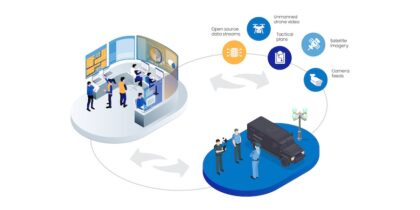Body-worn cameras are critical for capturing vital information for public safety officers in the field, but implementation has proved complex and expensive for many agencies. What if the future of body cameras doesn’t rely on a traditional camera at all?
This year at IACP 2018, I spoke with Alex Popof, CEO of Visual Labs, about how his company is taking an innovative approach to this technology.
“As technology evolves, you risk technological bloat,” Popof explained. “You have officers carrying more and more equipment. One of the challenges is: How do we consolidate equipment to be efficient but also practical at the same time?”
We’ve talked quite a bit about the benefits of device consolidation in public safety, and how this can be achieved through Samsung’s DeX in-vehicle solution powered by a smartphone.
Visual Labs has taken a similiar approach with its body camera solution.
“We actually call ourselves the body camera company that doesn’t make body cameras,” Popof said.
While other companies in the space make and sell proprietary cameras, Visual Labs leverages Android smartphones as fully functioning body cameras as well as audio recorders and GPS units.
“It can also be used as a cellphone,” Popof added. “Being able to have one multipurpose device is exciting for us as a software company but [is also exciting] to our customers.”
Popof believes officers will be eager to carry less equipment — and accomplish more. Having the body-worn camera, digital camera and smartphone all in one unit will unlock new doors for officers when it comes to both situational awareness and evidence collection.
Learn how to plan and implement a mobile initiative at your agency with this practical roadmap.







